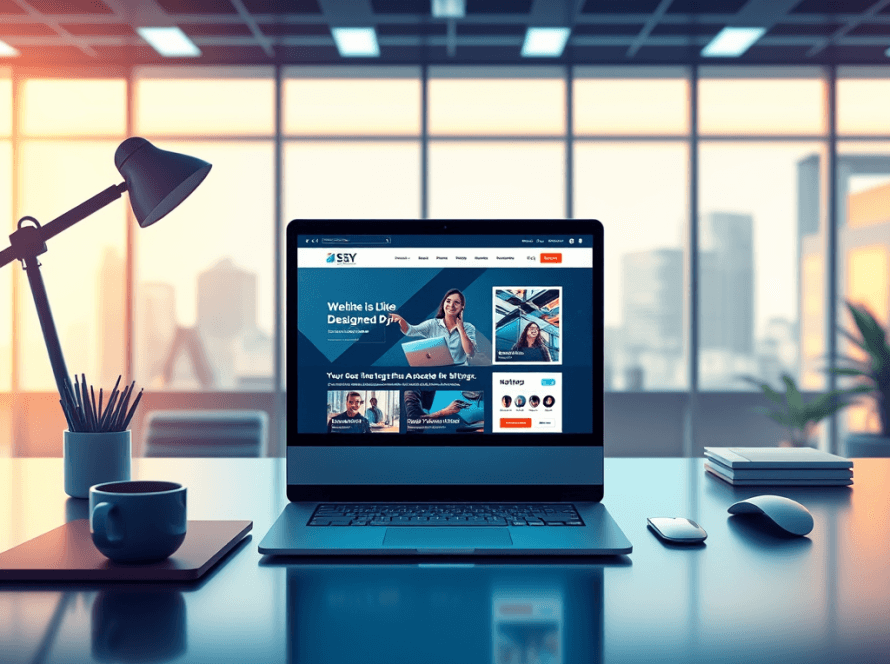Easy Steps to Make Your Website More Inclusive, Usable, and Trusted
🌏 Accessibility Isn’t Just for Big Companies Anymore
When small business owners hear “website accessibility,” they often think:
“That’s for government sites or big corporations, right?”
Not anymore.
Whether you’re a local tradie, café, creative studio, or online store — if your website isn’t accessible, you could be turning away potential customers without even knowing it.
At Bitstream Media, we believe websites should work for everyone.
Here’s a simple, non-technical guide to website accessibility — what it means, why it matters, and how you can improve it without needing a massive budget.
🤔 What Is Website Accessibility?
Website accessibility means making your website usable by people of all abilities, including those who:
Use screen readers or keyboard navigation
Have visual impairments or color blindness
Have hearing impairments
Have cognitive or motor challenges
Use mobile devices with accessibility features
✅ Accessibility ensures that everyone can use your website — regardless of ability, device, or circumstance.
🎯 Why Accessibility Matters for Your Small Business
✅ You expand your audience
1 in 5 Australians lives with disability (and more if you count aging populations or temporary injuries)
✅ You reduce legal risk
Accessibility is increasingly expected — and in some countries, legally required
Australia follows the Web Content Accessibility Guidelines (WCAG) as a best practice
✅ You improve your SEO
Many accessibility improvements (like good alt text, logical headings, and fast load times) also improve search rankings
✅ You build brand trust
Inclusive design shows that your business is thoughtful, professional, and future-ready
✅ Simple Accessibility Wins You Can Apply Right Now
1. 📄 Use Proper Headings — Don’t Just Make Text Bigger
✅ Use real headings (H1, H2, H3) instead of just bold or large font text.
Screen readers rely on headings to help users navigate quickly.
✅ Example:
H1 for page title
H2 for major sections
H3 for sub-points
This helps both users and search engines understand your content structure.
2. 🖼️ Add Descriptive Alt Text to Images
Alt text describes an image to someone who can’t see it.
✅ Every image (especially non-decorative ones) should have meaningful alt text.
✅ Good:
alt=”Electrician installing downlight in a Sydney home”
❌ Bad:
alt=”image1.png” or alt=”graphic”
Screen readers read alt text aloud. It also shows when an image can’t load — and improves your SEO.
3. 🎨 Use High-Contrast Colour Combinations
People with low vision or color blindness need sufficient contrast to read text.
✅ Check your colours using free tools like:
❌ Avoid:
Light grey text on white
Yellow on light backgrounds
Red/green combinations (color blindness risk)
Stick to strong, readable colour combinations — and use contrast to guide visual flow.
4. ⌨️ Make Sure Your Site Is Keyboard Navigable
Not everyone uses a mouse.
✅ Users should be able to:
Tab through menus and links
Access all interactive elements (like forms, buttons)
See which element is selected (called focus styling)
Test it:
Visit your site
Don’t touch your mouse
Try using just your Tab key
If you can’t get to every link, button, or input — that’s a red flag.
5. 📱 Make Your Site Mobile-Friendly (It’s Part of Accessibility)
✅ Many users rely on mobile screen readers or zoom features.
A mobile-responsive site:
Resizes content based on screen width
Keeps buttons large and easy to tap
Avoids horizontal scrolling
Uses readable fonts
Tip: Use Google’s Mobile-Friendly Test to check yours.
6. 🎙️ Avoid Autoplaying Media (or Give Clear Controls)
Auto-playing videos or sound can confuse or overwhelm some users.
✅ Best practice:
Don’t autoplay audio
Give users clear pause/mute buttons
Avoid looping animations or flashing content
Bonus: Autoplay can also annoy mobile users and increase bounce rates.
7. ✍️ Write in Clear, Simple Language
Accessibility isn’t just about code — it’s also about content clarity.
✅ Tips:
Use short paragraphs
Avoid jargon or technical terms (or explain them)
Use bullet points and lists to break up info
Front-load important content
Plain English helps everyone — not just those with cognitive challenges.
8. 🔊 Label Form Fields Clearly
Forms are common — but often inaccessible.
✅ Make sure:
Each input field has a visible label
Error messages are descriptive (e.g. “Please enter a valid email” instead of “Invalid field”)
Required fields are clearly marked
Button text is meaningful (“Submit” is okay, “Send Your Message” is better)
9. 🧭 Add Skip Links or Landmark Navigation (Advanced but Powerful)
This is more advanced but very valuable.
✅ A “Skip to Content” link lets screen reader users jump past the menu and go straight to the main content.
Most WordPress themes can support this — especially accessibility-focused ones like GeneratePress or Astra.
10. 🧪 Test with Real Tools
Accessibility is best measured through real testing.
Try:
[Lighthouse in Chrome DevTools](Right click → Inspect → Lighthouse → Accessibility)
These tools highlight common issues and give improvement suggestions — no dev degree required.
⚙️ Bonus: Accessibility Tools You Can Use Today
Tool | What It Does |
|---|---|
WAVE | Highlights accessibility issues visually on your site |
axe DevTools | Free browser extension for in-depth testing |
Lighthouse | Google’s built-in tool for accessibility + speed |
Color Oracle | Simulates colour blindness |
Contrast Checker | Ensures readable colour combinations |
✅ Many tools are free — and take just minutes to run.
📈 The Business Benefits of Accessibility
Benefit | Impact |
|---|---|
Wider audience reach | More users can engage with your content |
SEO improvements | Accessibility overlaps with search-friendly best practices |
Improved UX | Everyone benefits from clearer layouts and navigation |
Reduced legal risk | Accessibility is increasingly expected — and enforced in some industries |
Stronger brand reputation | Inclusive businesses are seen as more trustworthy and responsible |
🔄 Common Myths About Accessibility
❌ “Accessibility is only for people with disabilities.”
→ False. It helps older users, mobile users, ESL users, and everyone in between.
❌ “It’s too expensive.”
→ Many changes are free or low-cost — and can be rolled out gradually.
❌ “It’ll ruin my design.”
→ Accessibility and good design go hand-in-hand when done well.
🧠 Real-World Example: Small Changes, Big Impact
A local café we worked with had:
No image alt text
Menu PDFs that weren’t screen reader friendly
A contact form without labels
After basic updates:
Screen reader users could now navigate the site fully
A visually impaired customer left a positive review
Bounce rate on mobile dropped by 16%
✅ It took just a few hours — but made a lasting difference.
🚀 TL;DR: Small Steps to an Inclusive Website
Tip | Why It Helps |
|---|---|
Use proper headings | Makes content easier to scan and navigate |
Add image alt text | Helps screen readers and SEO |
Improve colour contrast | Ensures readability |
Support keyboard navigation | Helps non-mouse users |
Make it mobile-friendly | Broadens usability |
Avoid autoplay | Prevents confusion and sensory overload |
Use plain language | Improves comprehension |
Label forms properly | Reduces submission errors |
Add skip links (advanced) | Enhances screen reader navigation |
Test with tools | Finds hidden issues fast |
✋ Want an Accessibility Review of Your Site?
At Bitstream Media, we help small businesses:
Identify accessibility gaps
Fix them without breaking your design
Build better websites for everyone who visits
📞 Book an accessibility check-up
🌐 Visit bitstreammedia.com.au
Inclusive websites aren’t just the right thing — they’re the smart thing.



